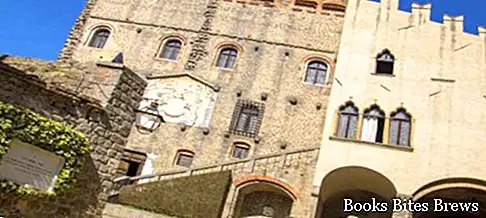What to see in Monselice, itinerary including the main monuments and places of interest, including Cini Castle, civic tower, Church of Santa Giustina, Jubilee Sanctuary of the Seven Churches and Mastio Federiciano.
Tourist information
City in the province of Padua, Monselice is located at the foot of the Euganean hills.
The territory has been inhabited since prehistoric times, while a fortification built by the Lombards on the top of the hill dates back to the seventh century, which constitutes the first nucleus of the city.
In the thirteenth century Ezzelino III da Romano, vicar of Emperor Frederick II of Swabia, strengthened the defensive system, including the entire built-up area within the walls and renovating the keep on the top of the Rocca, also commissioned the construction of the civic tower and the tower. di Ezzelino, which is part of the Castle of Monselice.
Around 1338 the village became the property of the Carraresi, lords of Padua, who enlarged and consolidated the walls of Ezzelino, creating a circle of external and four internal walls.
During the long period of Venetian domination, from the fifteenth to the eighteenth century, the defensive function of the city was gradually replaced by agricultural and industrial activity, thanks also to the proximity of the river routes, which favored trade, and the extraction of trachyte from the Colle della Rocca and Monte Ricco, reaching maximum development in the eighteenth century.
Monselice therefore became a residence center for the noble families of the Serenissima, who purchased vast plots of land in the center and in the nearby countryside.
The Castle became the residence of the Marcello family, the Duodo family instead built a villa and the Sanctuary of the Seven Churches halfway up the hill of the Rocca, while the Pisani and Nani families built the homonymous villas, which still adorn the beautiful town.
In the nineteenth century, for reasons of urban expansion, part of the external perimeter of the walls and the access gates to the city were demolished.
However, significant evidence remains of the medieval city, such as the splendid complex of the Castle, discrete sections of walls, the Church of Santa Giustina and all the building heritage of the Venetian period.
What see
At the foot of Colle della Rocca is the architectural complex known as Castello Cini, which includes several types of buildings, including an older part of the eleventh and twelfth centuries, corresponding to the Romanesque house and Castelletto, the ezzeliniana tower of the thirteenth century, a connecting palace between the pre-existing structures, built by the Marcello family, which also enlarged the intermediate rooms of the Ezzeliniana Tower to obtain a summer residence, to which the Library building was added in the sixteenth century, the renovation of the Venetian courtyard in the seventeenth century and the construction of the private family chapel in the eighteenth century, always by the Venetian nobles who lived there until the early nineteenth century.
Recommended readings- Veneto: Sunday day trips
- Schio (Veneto): what to see
- Vigo di Cadore (Veneto): what to see
- Vittorio Veneto: what to see
- Agordo (Veneto): what to see
With the fall of the Republic of Venice, which occurred at the end of the eighteenth century, the architectural complex underwent a long period of decline, which ended in 1935, when the property passed by inheritance to Count Vittorio Cini, who worked hard to return to the Castle the ancient medieval and Renaissance aspect, rich in furnishings and art objects, which we can admire today.
Since 1981, the monumental complex of the Cini Castle in Monselice has been owned by the Veneto Region, becoming a regional museum together with the Lombard Antiquarium and the Mastio Federiciano.
On the ground floor of the Castle Library there is the Longobardo Antiquarium, a museum that houses a small Lombard necropolis from the archaeological site located halfway up the Colle della Rocca coast.
On the top of the hill stands the Mastio Federiciano where a museum with excavation finds has been set up, while the upper part offers a wide panoramic view of the Euganean Hills and the plain.
On the slopes of Colle della Rocca, stands the Jubilee Sanctuary of the Seven Churches, built by the Venetian nobleman Pietro Duodo on a project by the architect Vincenzo Scamozzi, consisting of six chapels that follow one another along the road that goes up to the square in front of Villa Duodo, where there is the church of S. Giorgio.
The square is bordered by a scenic staircase leading to the Exedra of S. Francesco Saverio, with the cave named after the saint who stayed in Monselice in 1537.
The Romanesque Church of Santa Giustina, dating back to 1256 and also known as the Old Cathedral, is one of the most precious and rich in history places of worship in the city.
Located on the slopes of Colle della Rocca, along the road that climbs towards the Sanctuary of the Seven Churches and the Mastio Federiciano, it includes a high crenellated bell tower.
It was built following the demolition of the ancient parish church which stood on top of the hill, which had to give way to the imposing Federician keep, built by Emperor Frederick II and dedicated to him.




